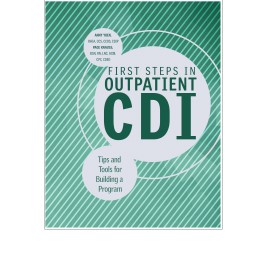Book excerpt: Differentiating between inpatient and outpatient

Tips and Tools for Building a Program
By Anny Yuen, RHIA, CCS, CCDS, CDIP, and Page Knauss, BSN, RN, LNC, ACM, CPC, CDEO
The terms “inpatient” and “outpatient” can refer to the clinical setting, but they also indicate the types of procedures performed. Inpatient procedures require that the patient be admitted to the hospital, typically for monitoring and recovery. In contrast, outpatient procedures generally refer to tests and therapeutic treatments performed in a medical facility without an overnight stay, usually within a few hours, and they cost less than inpatient services.
The Medicare Payment Advisory Commission (MedPAC) is required by law to review Medicare payment policies annually and to make recommendations to Congress. In March 2016, MedPAC released their 2014 findings, noting a significant increase in outpatient services rendered:
In 2014, the Medicare fee-for-service (FFS) program paid 4,700 hospitals a total of $173 billion for 9.7 million Medicare inpatient admissions, $193 million outpatient services, and $9.4 billion of uncompensated care costs. These sums represent a 4 percent increase in hospital spending from 2013 … Outpatient payments rose due to volume increases, price increases, and bundling of some laboratory services into the outpatient fee schedule.
Another reason for this shift from inpatient to outpatient is the incentives that have been created to shift patients to higher-cost outpatient sites of care. According to the 2016 MedPAC report, the purchase of freestanding physician practices by hospitals and the conversion of billing from the physician fee schedule to hospital outpatient department (HOPD) visits resulted in a significant increase in the number of evaluation and management (E/M) visits billed as outpatient services in 2014. It was estimated that one quarter of the growth in the outpatient setting was due to this shift.
High numbers and quick encounters
The number of outpatient hospital visits significantly exceeds the number of inpatient visits. In 2014, there were a total of 193 million outpatient encounters. For every 100 inpatient cases treated, a hospital treats about 850 outpatient cases. Some outpatient hospital services include the following:
- Chemotherapy
- Radiology
- Laboratory
- Emergency
- Observation
- Rehabilitation/physical therapy
- Ambulatory surgical procedures, such as upper gastrointestinal endoscopies and cataract removals
Outpatient encounters require significantly less time than inpatient cases. Outpatient cases can vary from a few minutes to 23 hours. (The terms “encounter” and “visit” are often used interchangeably in describing outpatient services, including in the Official Guidelines for Coding and Reporting.) Providers in the outpatient setting must make every minute count when it comes to recording patient care activities.
Editor’s note: This article is an excerpt from the book First Steps in Outpatient CDI: Tips and Tools for Building a Program.
